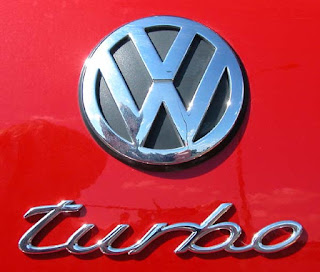 The ever-increasing EPA requirements for new vehicle fuel economy, combined with the ever-present public demand for power have automotive manufacturers looking to a technology the European car makers have been using for generations. Turbo powered vehicles are getting to be the rule, rather than the exception.
The ever-increasing EPA requirements for new vehicle fuel economy, combined with the ever-present public demand for power have automotive manufacturers looking to a technology the European car makers have been using for generations. Turbo powered vehicles are getting to be the rule, rather than the exception.
So what’s the big deal? What is it about a turbo that is suddenly so relevant? A turbocharger takes a small displacement engine, with the fuel economy advantage that goes with the little engine, and helps it to perform like a larger engine when the driver asks for power for passing, climbing an incline, or simply for fun.
For those who aren’t aware, a turbocharger uses the exhaust from the engine to spin a turbine, which then pumps additional air into the combustion chamber. More air allows it to also burn more fuel, giving a boost in power. So when the driver wants power, the turbocharger gives the extra kick to make the right foot happy. The vehicle manufacturer can use a smaller engine, allowing for better fuel economy when simply cruising, and the turbo can provide the kick when additional power is required. As a result, a turbocharged motor gives “the best of both worlds” - small engine fuel economy, and quick acceleration when needed.
What’s the downside? Some turbocharged engines recommend premium fuel, in order to get the best performance and economy. Paying a little more at the pump eats into the savings provided by the economy. For most heavy-footed drivers, however, the combination of power and economy is worth a few cents more when they fill up.
A small engine generating a lot of power with a turbocharger will typically require a synthetic or partial-synthetic motor oil. These oils are more expensive than a normal 5w30 oil change, but don’t lose their viscosity with the higher engine temperatures generated by a turbocharged small engine. On the other hand, a partial-synthetic or full-synthetic oil change is normally performed less frequently than with basic oil. Where a basic oil change is typically recommended every 3000 miles or so, most manufacturers will recommend at least a 3500 mile interval between changes with the better oil. In fact, many manufacturers will list a 5000-10,000 mile interval, especially with full-synthetic*. The fact is, most engines in new vehicles today - turbocharged or not - are designed for at least a partial-synthetic motor oil anyway.
Because of the heat generated by a turbocharged motor, it more important than ever to change oil regularly. neglecting this basic maintenance, or even running much beyond the factory recommendations, can lead to engine sludge, and the eventual ruin of the motor. Change your oil!
Additionally, it is a good idea to keep the coolant system in top condition, so flushing the coolant system regularly will be highly recommended. The turbocharger needs to stay cool, as does the engine itself. A coolant system that is even partially clogged can prevent the heat from properly dissipating, leading to eventual failure of the turbo, or even the engine. Vehicle manufacturers have learned a lot about turbocharging, and also about cooling, so it’s less common to encounter turbo problems today than it was when turbos were no to the market.
In years past, the increased pressure inside the engine produced by the turbo forcing more air into it, used to cause issues with gaskets and seals. Manufacturers today have designed their engines to accommodate this, so this isn't as much of a concern today.
In years past, the increased pressure inside the engine produced by the turbo forcing more air into it, used to cause issues with gaskets and seals. Manufacturers today have designed their engines to accommodate this, so this isn't as much of a concern today.
Fuel economy requirements in the United States are rising. Vehicle manufacturers must find more ways than ever to eke out a few more miles per gallon as they design new vehicles. The American car and truck buyers, however, are not letting up in our demand for power, and we speak with our dollars. There is a market for a vehicle with excellent fuel economy and little excitement, but the market is a small one. Most of us want it all. We want our engines to roar and our vehicles to surge when we press down our right foot. But we also want to be at least somewhat wise about the money we spend at the gas pump.
Vehicle manufacturers around the world are figuring out what companies like Volkswagen have known for years. Turbocharging is one shining example of how to give the people what we want. Have you driven a Turbo? If not, it might be worth your time and save you some money!
Thanks for reading this. Happy shopping!
Mike Bidwell
Mankato Motor Co.
www.mikebidwellcars.com
mikebidwellcars@gmail.com
This article is also shared on the Mankato Motors website. Check it out here: http://www.mankatomotors.com/blog/2015/june/12/turbo-talk-with-mike-bidwell-at-mankato-motors.htm
* follow manufacturers recommendations for maintenance
This article is also shared on the Mankato Motors website. Check it out here: http://www.mankatomotors.com/blog/2015/june/12/turbo-talk-with-mike-bidwell-at-mankato-motors.htm
* follow manufacturers recommendations for maintenance
No comments:
Post a Comment